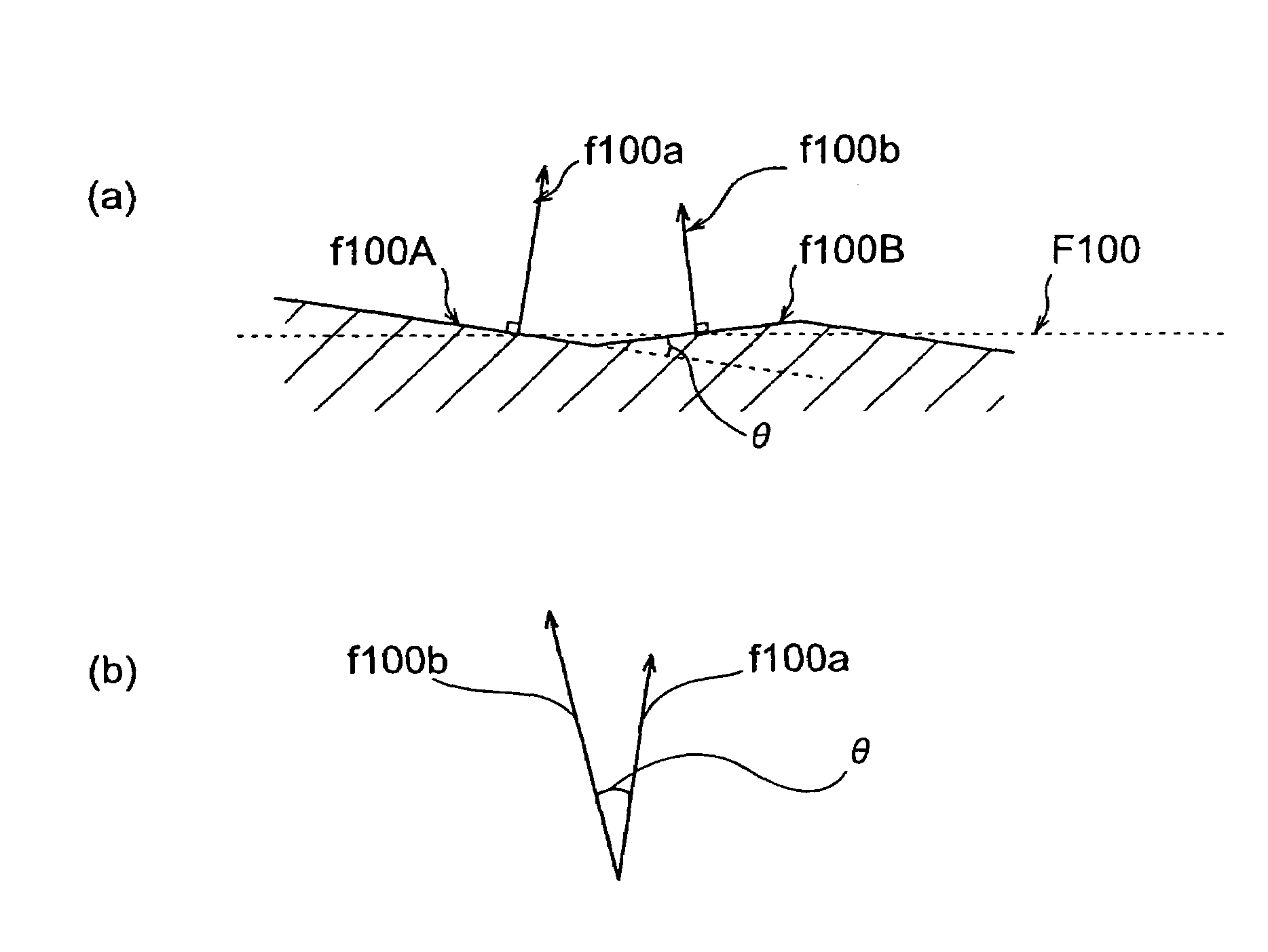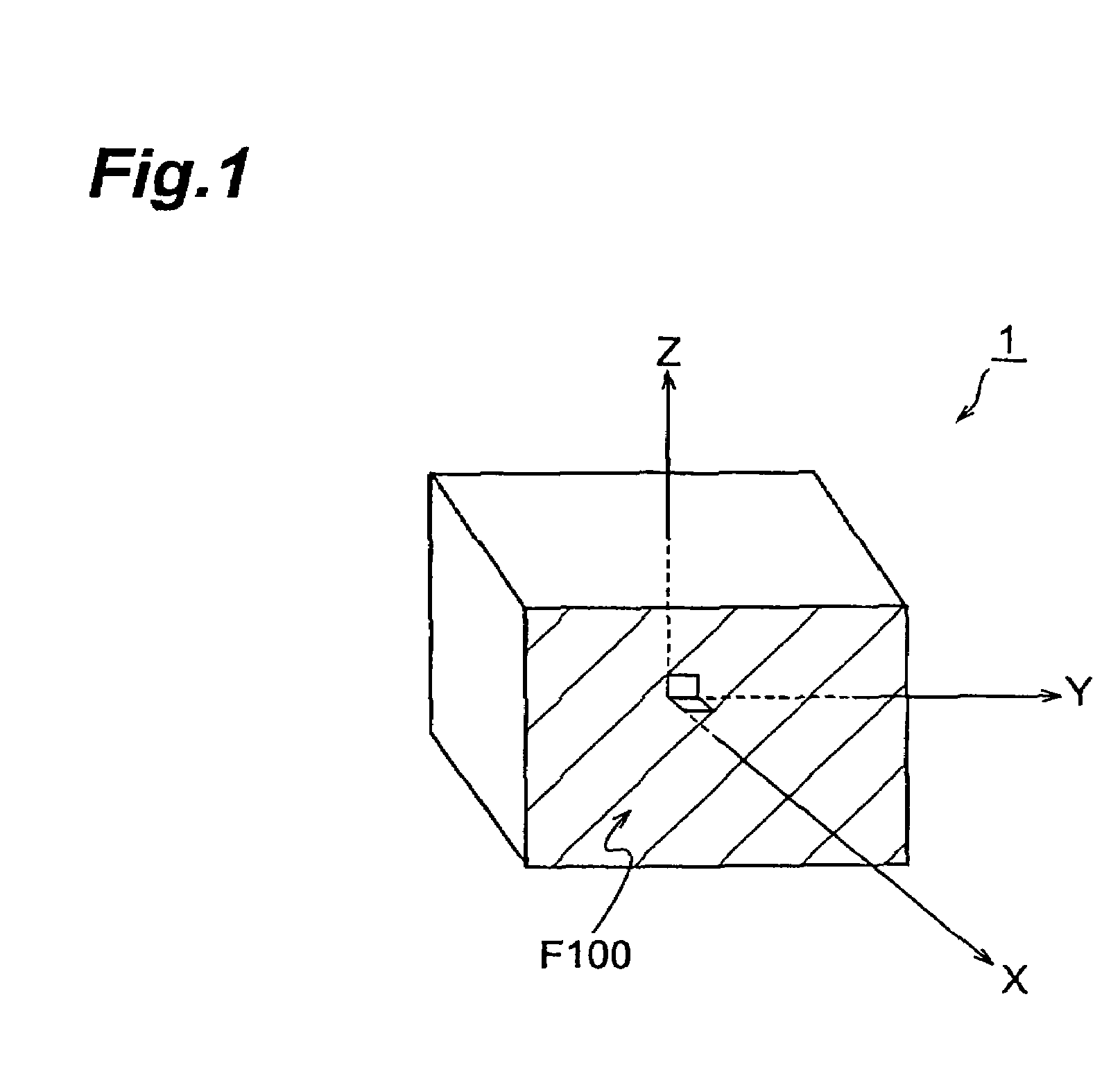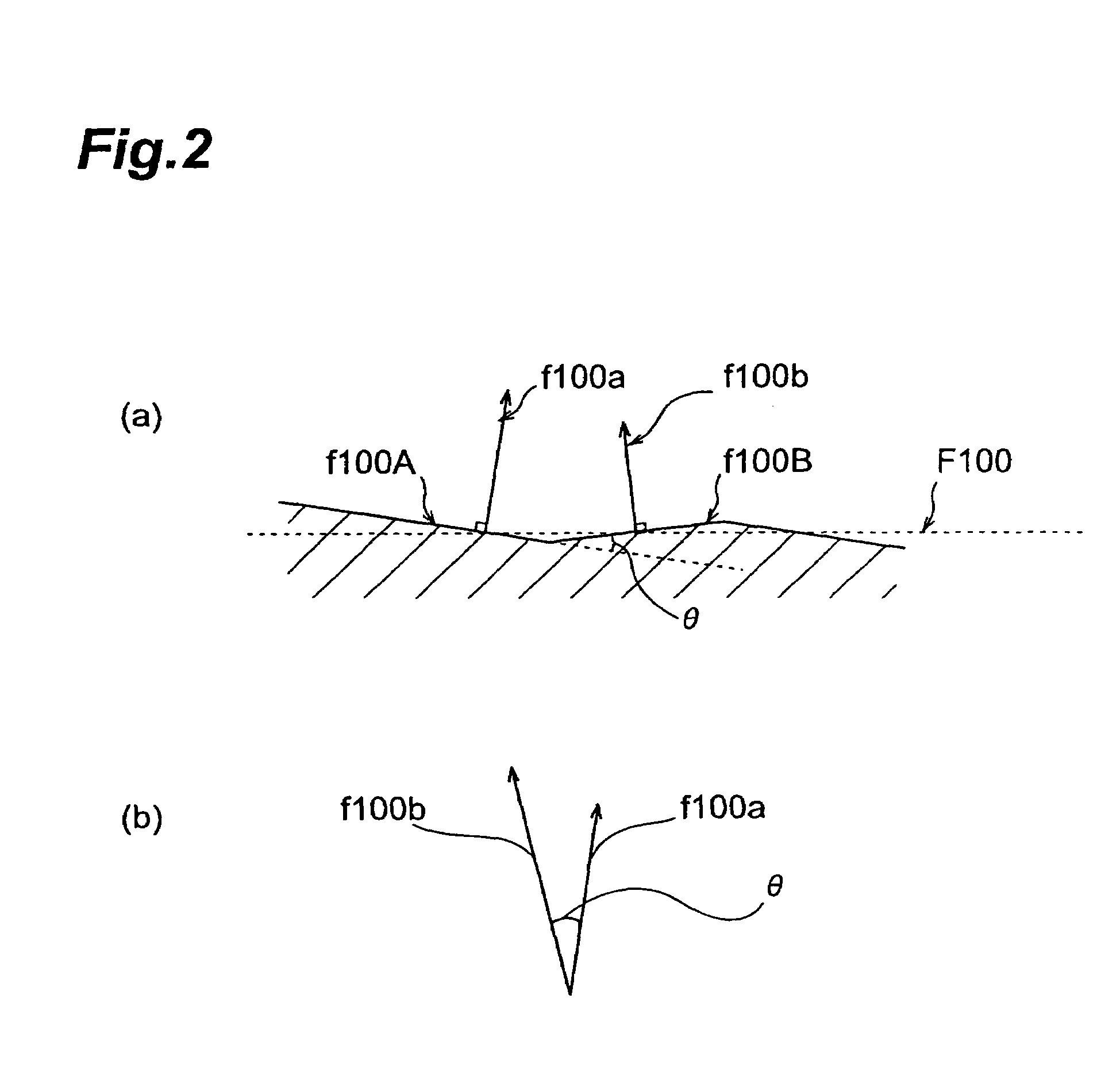Rare earth silicate single crystal and process for production of rare earth silicate single crystals
a technology of rare earth silicate and single crystal, which is applied in the direction of instruments, silicon compounds, under a protective fluid, etc., can solve the problems of crystal fracture and fracture (cleavage fracture) that have occurred, and achieve the effect of reducing crystallinity and adequately preventing the generation of cleavage fractur
- Summary
- Abstract
- Description
- Claims
- Application Information
AI Technical Summary
Benefits of technology
Problems solved by technology
Method used
Image
Examples
example 1
[0087]A mixture of 20489.1 g of Gd2O3, 97.8 g of CeO2 and 3413.1 g of SiO2 (total of 24,000 g) was loaded into an Ir crucible with a 180 mm diameter, a 180 mm height and a 3 mm thickness. The mixture was then heated in a high-frequency induction heating furnace to above 1950° C. and melted down to obtain a molten liquid comprising Ce0.01Gd1.99SiO5.
[0088]Next, the tip of a lifting rod having a seed crystal fixed to its lower end was introduced into the molten liquid for seeding. A single crystal ingot with an 8 mm neck diameter was lifted out at a lifting speed of 1-3 mm / h to form a neck section. A cone section (cylindrical section) was then lifted out, with lifting of the cylindrical section starting when the diameter (D) reached 105 mm. After growing the cylindrical section, the single crystal ingot was cut away from the molten liquid and cooling was initiated.
[0089]In order to simultaneously satisfy the conditions of inequalities (10) and (11) above, the cooling time A was 30 hour...
PUM
| Property | Measurement | Unit |
|---|---|---|
| diameter | aaaaa | aaaaa |
| volume | aaaaa | aaaaa |
| angles | aaaaa | aaaaa |
Abstract
Description
Claims
Application Information
 Login to View More
Login to View More - R&D
- Intellectual Property
- Life Sciences
- Materials
- Tech Scout
- Unparalleled Data Quality
- Higher Quality Content
- 60% Fewer Hallucinations
Browse by: Latest US Patents, China's latest patents, Technical Efficacy Thesaurus, Application Domain, Technology Topic, Popular Technical Reports.
© 2025 PatSnap. All rights reserved.Legal|Privacy policy|Modern Slavery Act Transparency Statement|Sitemap|About US| Contact US: help@patsnap.com



